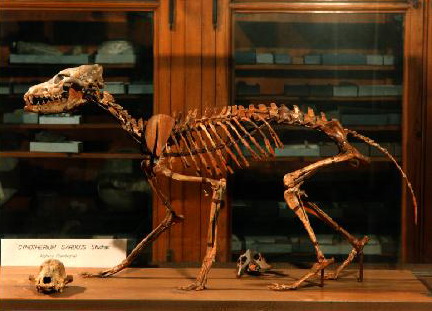The Paleontological Collections

Paleontological finds mainly come from rocky layers of the Italian peninsula and witness the existence of organisms that lived in the seas and continents from about 570 million years ago until today.
Of particular interest is the presence in the collections of various “Types” (holotypes, lectotypes, plesiotypes, etc.). These are unique specimens to which experts all over the world refer to when certifying whether other finds discovered later are of the same species. They can then proceed with their scientific naming according to paleontological classification rules.
Until the last century, the various collections were described in original scientific studies and monographs by different authors which appeared in prestigious Italian and foreign scientific papers. They have been assembled in the following way:
GENERAL COLLECTION (about 76,000 finds)
Specimens mainly belonging to the group of invertebrates, collected during survey activities for the drawing up of the Geological Map of Italy and during research campaigns in the former Italian African colonies. Other specimens were collected with exchanges, acquisitions and donations. This collection also includes other subcollections, namely: Didactic, Great specimens of isolated fossils, Foreign and Fossil Tracks collections.
HISTORICAL COLLECTIONS (about 20,000 finds)
Prestigious collections composed of various taxonomical groups originating from different regions. Since the last century, they were described in studies and publications by famous scientists. They are divided according to the different phyla they belong to (Graptolites, Ammonites, Rudistids, Ichtyofauna) and also to the name of the scientist who established or studied them. Among the main ones are: G. Bonarelli, M. Canavari, G. Di Stefano, G. Checchia Rispoli , C. Crema , G. Curioni, T. Lipparini, A. Malatesta , G. Meneghini- C.F. Parona, R. Rasetti And P.E. Vinassa De Regny. Many “Types” are preserved in these collections.
VERTEBRATES COLLECTION (about 3,000 finds)
This collection mainly consists in finds belonging to the Plio-Pleistocenic mammalian fauna originating from deposits in the Roman countryside, Tuscany, Sicily and other Italian regions.
PLANTS COLLECTION (about 600 finds)
This includes both isolated specimens and different collections of Italian localities such as the Flora of Monte Jano, of the Tuscan Carboniferous and important Paleozoic finds of Pteridophyte e Spermatophyte of areas corresponding to today’s Germany.
